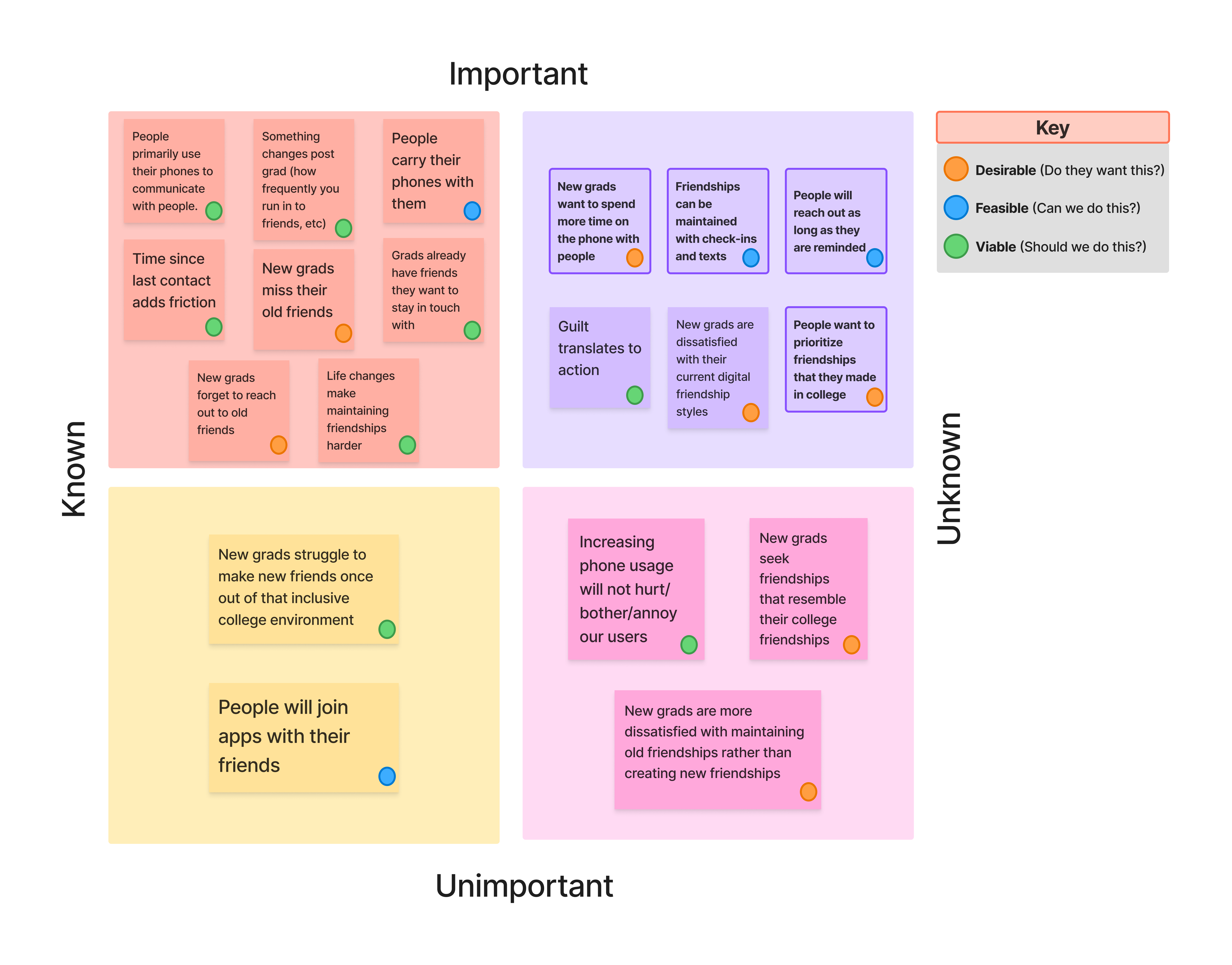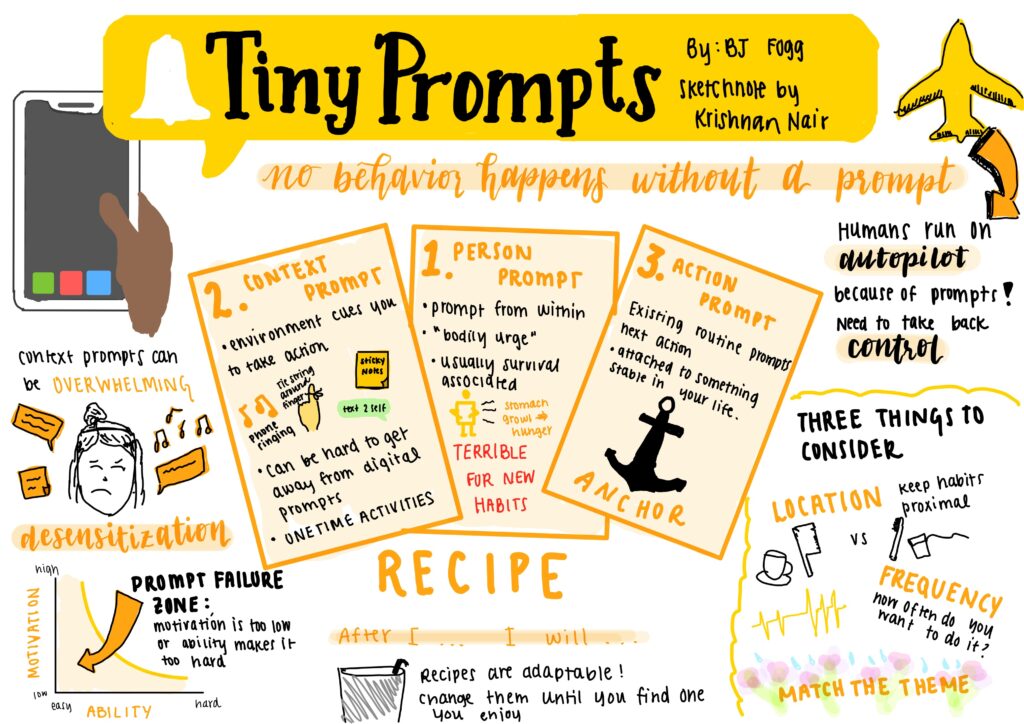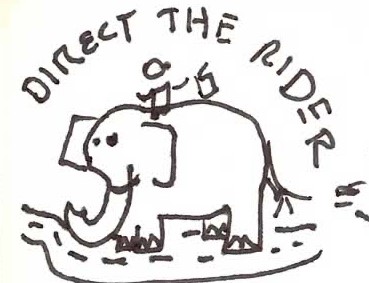Assumption Testing: Reaching Out Post-Grad
Many struggle to stay in touch with old friends and initiate new friendships in unfamiliar environments after graduation. We aimed to test key assumptions about post-grads willingness and ability to reach out and what factors might encourage or discourage social connection. Using the assumption map below, we identified the most critical uncertainties and designed tests to validate them.
Assumption Map

We listed assumptions and categorized them by desirability, feasibility, and viability before determining their importance and whether they were known. The four most crucial unknowns we developed assumptions tests for are highlighted in the top right and further described below.
Assumption Tests
We designed tests to validate the following assumptions:
1. People will text or call friends if reminded to do so
- Test: Hold a sign that says “Have you reached out to anyone today?” in a crowded area; engage with people who take note of the sign to further encourage them
- Metric: The portion of people we engage with that text or call a friend
- Success Criteria: At least 30% of people we engage with text or call a friend
2. People want to maintain friendships that they made in college post-graduation
- Test: Survey college seniors and recent graduates to assess their interest in maintaining friendships and their current efforts to stay in touch with people
- Metric: The percentage of respondents who express interest in maintaining friendships post-grad (1-10 scale)
- Success Criteria: At least 50% of participants indicate an interest level of 5 or above (on a 1-10 scale)
3. New grads want to spend more time on the phone with people
- Test: Survey how much time each week new graduates want to be on their phones weekly and what their screen time is
- Metric: The difference between expected value, actual value, and other participants’ averages for time spent on the phone
- Success Criteria: People want to spend at least an hour on their phones each week
4. Friendships can be maintained with check-ins via texts
- Test: A/B test where group A uses only text check-ins to keep in touch with loved ones while group B uses a mix of text, video calls, and meeting in person if possible
- Metric: How close participants feel to their friends and how frequently they contacted them over the test (with an additional metric of interaction length/depth/quality if possible)
- Success Criteria: Group A reports similar or high friendship closeness metrics to group B’s and stayed in contact at least as frequently as group B did
Assumption Test Cards








